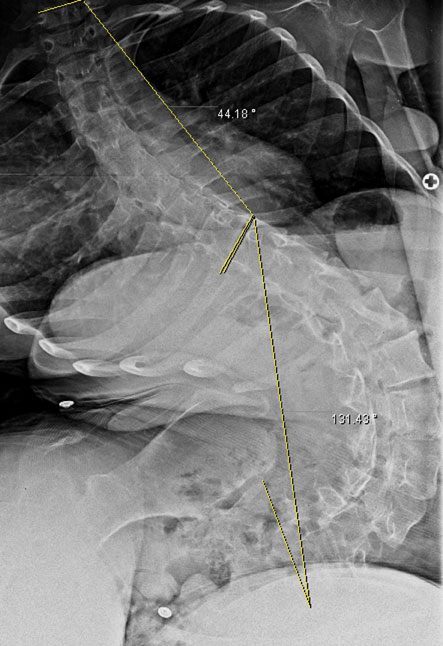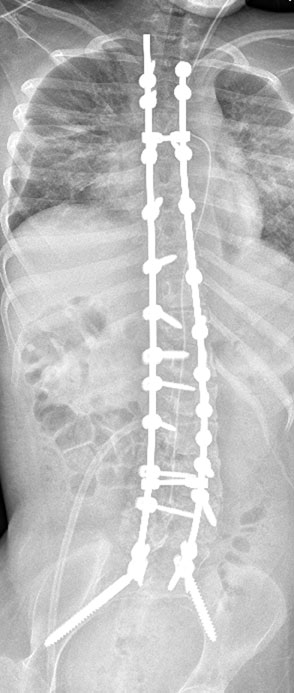Intraoperative cardiopulmonary arrest found uncommon in pediatric fusions
Children who weighed less had a statistically significantly increased risk of this complication.
Fewer than 0.5% of pediatric patients who underwent spinal deformity surgery experienced intraoperative cardiopulmonary arrest based on results of a retrospective review study. However, the findings showed patients with neuromuscular disorders had a three-times greater risk of this complication.
“This article showed that even though children are considered resilient in general, spine deformity surgery in certain children has a risk of intraoperative arrest. The team should be prepared to prevent this whenever possible by keeping up with coagulation, blood products and electrolytes,” Paul D. Sponseller, MD, MBA, the lead investigator for the study, told Spine Surgery Today.
Although the risk of intraoperative cardiopulmonary arrest (ICA) is low during spinal deformity surgery, according to Sponseller, who is director of pediatric orthopedics at the Johns Hopkins Children’s Center in Baltimore, spine surgery teams must be prepared for any situation.
Low risk for ICA
The study, which was published in Spine, included records of 2,524 patients who underwent spine fusion surgery at two pediatric tertiary-care hospitals from 2004 to 2014. Researchers used the Fisher’s exact test and Student’s t-test to compare outcomes of patients who experienced ICA during their surgery and patients who did not. They also compared the groups’ diagnosis, estimated blood loss (EBL), number of vertebral levels fused and proportion of blood volume lost.

In all, ICA occurred in 11 patients (0.4%). Surgeons resuscitated 10 patients and one patient died. At the time of ICA, potassium levels exceeded 5.5 mEq/L in six patients and ionized calcium was less than or equal to 1 mmol/L in two patients. Also, hemoglobin levels were 5 g/dL or less in four patients at the time of ICA, according to the results.
The patients’ weight also was a statistically significant factor. The patients with ICA weighed 34 kg, mean, which was less than the patients who did not experience ICA, whose mean weight was 49 kg.
Factors related to ICA
From the study, some factors stood out as being associated with ICA. Patients with neuromuscular disorders were three-times more likely to experience ICA during spinal fusion surgery and 0.12% of patients with idiopathic scoliosis experienced ICA during the fusion procedures.


Images: Sponseller PD
Furthermore, patients who experienced ICA had significantly more vertebral levels fused (15) than patients who did not experience ICA (12). In addition, EBL among patients with ICA was 2623 mL, which was significantly higher than for patients who did not experience ICA (959 mL). The difference in proportion of blood volume loss for patients with ICA vs. patients without ICA (1.03 vs. 0.33) was also statistically significant, based on results of the study.
Sponseller and colleagues noted eight patients experienced ICA due to suspected cardiovascular causes. Primary rhythm disturbance, anaphylaxis and respiratory/airway causes each was associated with ICA in one patient each.
“Our findings are reassuring Spinal surgeries in children are overwhelmingly safe, but even so, some risk remains,” Sponseller said in a press release from Johns Hopkins Medicine. “Armed with this knowledge, surgeons can plan accordingly by taking a few additional preventive steps to make what is an already safe surgery even safer.” – by Robert Linnehan
- References:
- Menga EN, et al. Spine (Phila Pa 1976). 2015;doi:10.1097/BRS.0000000000001105.
- www.eurekalert.org/pub_releases/2015-11/jhm-sq111715.php.
- For more information:
- Paul D. Sponseller, MD, MBA, can be reached at Johns Hopkins Children’s Center, 601 N. Caroline St., 5th Floor, Baltimore, MD 21287; email: psponse@jhmi.edu.
Disclosure: Sponseller reports no relevant financial disclosures.
